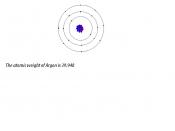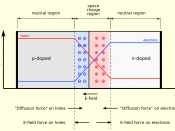Static Electricity
Bohr Model
Electrons move
External
Less massive compared to protons (2000x)
Charges
Positive
Objects gain (+) by loosing electrons
Negative
Object gain (-) by gaining electrons
Coulombs
Measures Charges
Millikan
Elementary charge
e = 1.6 x 10 -19
smallest found in electron / proton
Total Charge
Q = ne
n is charge (# electrons / protons)
e is elementary charge
Forces
Opposites attract
Like charge repel
Charged & neutral attract
Polarization
e are repelled or attracted
Charging Objects
Contact
Friction
2 dissimilar materials rub 2gether
1 has affinity for electrons
1 wants to give electrons
Induction
Charged object comes close to another neutral object that is connected to ground
Charged objected rebels electrons into the groun
Connection to ground is broken
End result is charged object
Electrical Ground
Any charged objects that come in contact w/ the ground will be neutralized
Gives & receives electrons freely
Little difference to net charge
It's BIG
Plumbing
Bill Gates finding 25 cents
Twitches
Muscles receive electrical impulses
Causes twitch
Non Conductors
Dielectric property
Ability to keep charges separate
Electricity will go thru it
Provided w/ enuf voltage
Electricity
Will always find the path least resistant (easiest)
Air is hard
Ben Franklin
Invented lightening rod
Vandegraff generator
Plastic Rollers rub against belt
Frictional charging occurs (at the bottom..
motor)
Polarization causes the belt charges to separate neutral to (+) to neutral to (-)
Plastic rollers is slightly (+)
Gets (-) from brush
Electrons attracted to (+) charge on belt
Ground supplies more (-)
Electrons fly off into dome at top
Electro field
Repulsion
(-) evenly spread out apart dome
Repulsion
Goes to outermost
Sparks
Too many (-)
Needs to discharge
Coulomb's Law
Calculates forces btwn 2 charged objects
F= (kq1q2)/r2
Q=ne
K = constant
9 x 109 Nm2/C2


